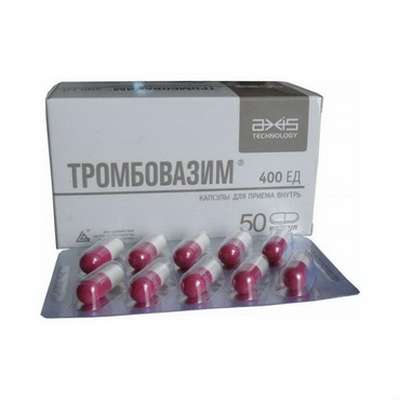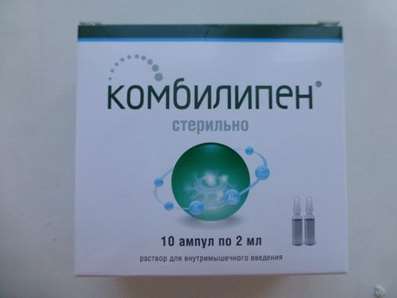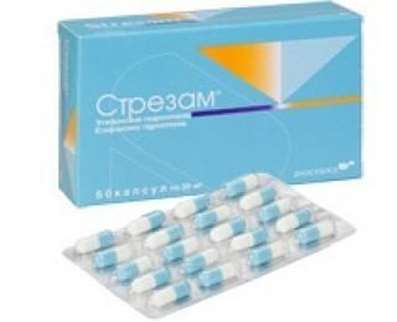Phenibut (Noofen)
27 Dec 2016
Pharmacological group: nootropics
Systematic (IUPAC) name: (RS) -4-amino-3-phenyl butyric acid
Trade names: Noofen
Legal status: available without prescription (USA)
Application: oral
Half-life: 5:00
Synonyms: Phenibut, PhGABA
Formula: C10H13NO2
Mol. weight: 179.216 g / mol
β-phenyl-γ-aminobutyric acid (trade name Noofen), better known as Phenibut, is a derivative of the natural inhibitory neurotransmitter gamma-aminobutyric acid (GABA). The addition of the phenyl ring allows Phenibut cross the blood-brain barrier. Phenibut sold as a dietary supplement, and has not been approved as in the US or Europe, the drug, but it is sold as a psychotropic drug in Russia. It has been reported that the drug has a neuroprotective effect due to its ability to improve neurological function, but other researchers have observed similar effects. It is believed that Phenibut has a calming effect on both animals and humans. Phenibut was developed in the Soviet Union in the 1960s, and has since been used in Russia to treat a wide range of diseases, including post-traumatic stress disorder, anxiety and insomnia. Title Phenibutum comes directly from a chemical compound names, β-phenyl-γ-aminobutyric acid.
History
Phenibut was synthesized at the Leningrad Pedagogical Institute of the USSR. Im Herzen and the Institute of Experimental Medicine, Academy of Medical Sciences of the USSR Professor VV Perekalin and colleagues. Phenibut was included in a standard first aid kit Russian cosmonauts. Using a "normal" tranquilizers to relieve stress and anxiety associated with sleepiness, which is unacceptable for the astronauts; Phenibut also lowers stress levels without compromising performance. In 1975 Phenibutum was included in the first aid kit astronauts who took part in a joint mission of the Apollo-Soyuz.
General information
According to their chemical structure, Phenibut represents a phenyl derivative of GABA. Although its calming effect similar to other GABA agonists, Phenibutum associated with metabotropic GABA receptor B, the section responsible for the sedative effect of baclofen (p-chloro derivative Phenibut) and gamma-hydroxybutyrate (GHB), but also acts on GHB GHB receptor. In the literature there is no consensus on whether Phenibut bind to ionotropic GABA receptor that is responsible for the action of benzodiazepines, barbiturates, Z-drugs, and some of the effects of ethanol. According Allikmetsa and Riazha (1983) and Shulgina (1986), Phenibut binds to GABA, but Lapin (2001) argues that it is not. It is alleged that GABA binding only occurs at higher concentrations. In the literature, which are supported nootropic effects Phenibut, as indicated by its calming effect, reducing stress and anxiety, improve sleep and potentiation of the effects of tranquilizers and antipsychotic drugs. It also assumes that Phenibut has anticonvulsant effect, though studies of other agonists of GABA B, such as GHB and analog phenibut baclofen have shown that these drugs can act as potential convulsant (drugs that cause convulsions). It should be noted, however, that acts on GHB GHB receptor which is associated with convulsions, and Phenibutum - no.
physical properties
Phenibut HCl is a white crystalline powder, very sour taste. It is easily soluble in water, soluble in alcohol, and a pH of 2.5% aqueous solution of approximately 2.3-2.7.
Doses of Phenibut
Typically, the recommended doses are 250-1500 mg twice daily, or as needed. The dose of Phenibut is adjusted at the discretion of the practitioner and are sized according to the patient's needs. At doses above 40 mg / kg of body temperature can be observed along with a decrease of muscle relaxation.
Chemistry
Structurally Phenibutum is γ-aminobutyric acid with a phenyl group in β-position. It is a chiral molecule and, thus, has two potential configuration, (R) - and (S) - enantiomers. Only the (R) - enantiomer Phenibut is biologically active, (S) - enantiomer is not a particular value. The substance has a structure close to that baclofen (excluding chlorine atom in the para position of the phenyl group) and includes structure phenylethylamine.
Pharmacology
Pharmacological effects Phenibut similar to the effects of Baclofen, however Phenibut is less potent per milligram dosage. Phenibut acts as an agonist of metabotropic GABA receptor B, and at higher doses - also ionotropic GABA receptor. Some studies have shown that Phenibutum counteracts the effects of phenylethylamine, whereas others have shown no effect of the compound on the anxiety induced by taking phenylethylamine. Furthermore, Phenibutum increases dopamine levels.
Contraindications and side effects of Phenibut
There is a lot of data (on internet forums and blogs) on the development of withdrawal symptoms after taking Phenibut, including "nervousness and irritability, agitation, fatigue, poor appetite, increased heart rate, nausea, insomnia, and a feeling of tension," which is associated, primarily with agonism towards GABA B. systematic study of side effects was not conducted. Persons taking MAO inhibitors or anti-epileptic drugs such as carbamazepine or oxcarbazepine, should consult their doctor or pharmacist before using Phenibut. Some evidence suggests that Phenibutum can modulate the function of certain drugs against epilepsy.
Availability
Phenibut (Noofen) adopted in asthenic and anxious-neurotic conditions, anxiety, fears, obsessive-compulsive disorder, psychopathy, stuttering and tics in children, enuresis, urinary retention against the backdrop of myelodysplasia, insomnia and nightmares in the elderly. The drug is also used for the prevention of anxiety disorders that arise before surgery and painful diagnostic studies (premedication), for the treatment of Meniere's disease, vertigo associated with dysfunction of the vestibular apparatus of various origins (including the otogennyh labyrinthitis, vascular disorders and traumatic) ; for the prevention of motion sickness when kinetoses, in primary open angle glaucoma (in combination therapy) as an adjunct therapy in the treatment of alcoholism (for relief of psychopathological and somatovegetative disorders with withdrawal syndrome), for the treatment of pre-delirious and delirious states in alcoholism (in combination with conventional detoxication means).

 Cart
Cart





